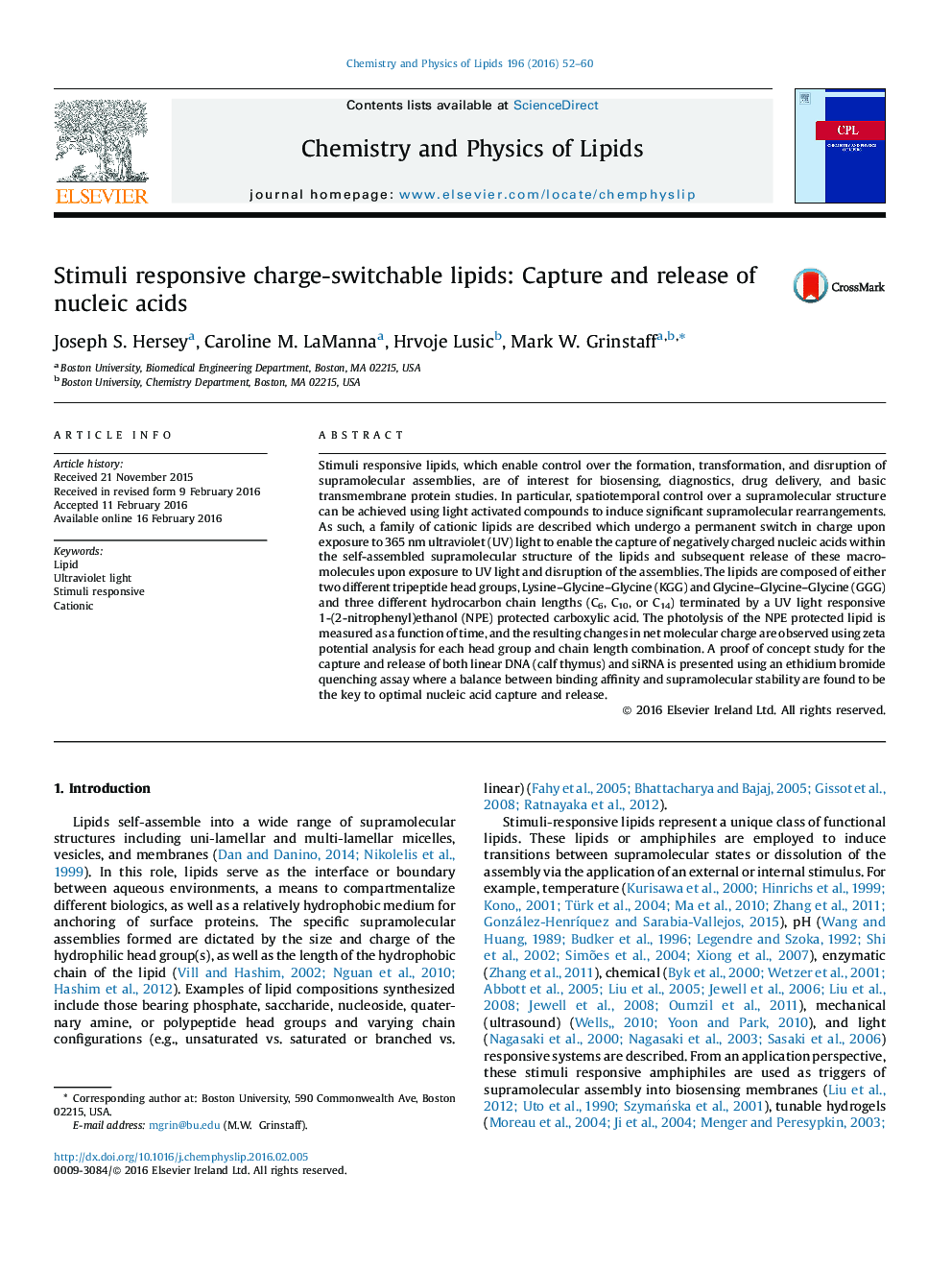| کد مقاله | کد نشریه | سال انتشار | مقاله انگلیسی | نسخه تمام متن |
|---|---|---|---|---|
| 1251691 | 1496281 | 2016 | 9 صفحه PDF | دانلود رایگان |
• Novel light responsive cationic lipids are synthesized.
• Lipids complex DNA and siRNA and form supramolecular structures.
• Light triggered dis-assembly of supramolecular lipid-nucleic acid assemblies is demonstrated.
• Capture and release of nucleic acids is governed by electrostatic interactions.
Stimuli responsive lipids, which enable control over the formation, transformation, and disruption of supramolecular assemblies, are of interest for biosensing, diagnostics, drug delivery, and basic transmembrane protein studies. In particular, spatiotemporal control over a supramolecular structure can be achieved using light activated compounds to induce significant supramolecular rearrangements. As such, a family of cationic lipids are described which undergo a permanent switch in charge upon exposure to 365 nm ultraviolet (UV) light to enable the capture of negatively charged nucleic acids within the self-assembled supramolecular structure of the lipids and subsequent release of these macromolecules upon exposure to UV light and disruption of the assemblies. The lipids are composed of either two different tripeptide head groups, Lysine–Glycine–Glycine (KGG) and Glycine–Glycine–Glycine (GGG) and three different hydrocarbon chain lengths (C6, C10, or C14) terminated by a UV light responsive 1-(2-nitrophenyl)ethanol (NPE) protected carboxylic acid. The photolysis of the NPE protected lipid is measured as a function of time, and the resulting changes in net molecular charge are observed using zeta potential analysis for each head group and chain length combination. A proof of concept study for the capture and release of both linear DNA (calf thymus) and siRNA is presented using an ethidium bromide quenching assay where a balance between binding affinity and supramolecular stability are found to be the key to optimal nucleic acid capture and release.
Figure optionsDownload as PowerPoint slide
Journal: Chemistry and Physics of Lipids - Volume 196, March 2016, Pages 52–60
